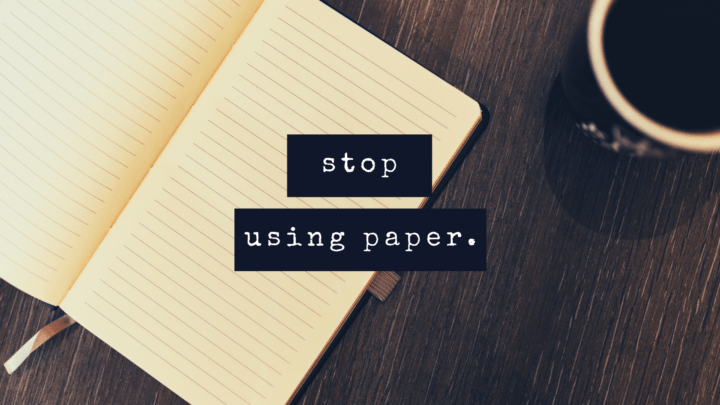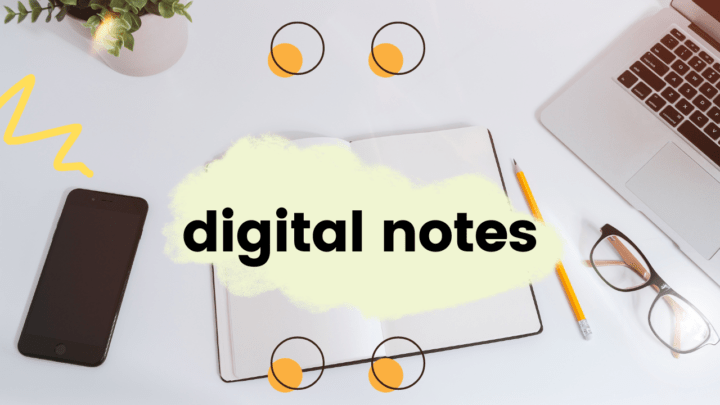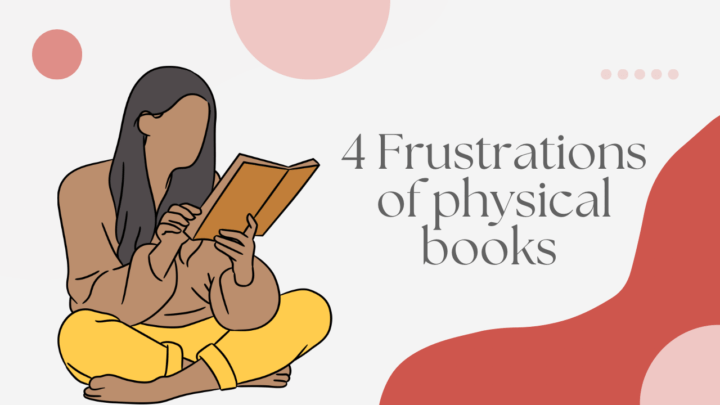We’ve talked so much about note-taking apps, but we’ve never talked about note-taking itself, and that is what this article is all about.
Note-taking vs note-making
Before we get started, it’s important to understand that note-taking and note-making are related but very different processes. Note-taking is the practice of collecting and recording information you hear, see or read during lectures, meetings, seminars or other similar activities. It also captures information about a subject or topic, from different sources (like multiple textbooks). It is quick because you write information as fast as you can, without needing to understand or remember it. Usually, you record information in the author or speaker’s words because there’s no time to paraphrase the information.
Note-making is more intellectually taxing. It is the process of analysing, summarising and organising information that you read. Once you’ve taken your notes from a meeting or multiple textbooks, you can make notes from that. At this stage, you use your own words to recreate a permanent record of concepts, topics or subjects.
If you’ve been following Paperless X since I was a student, you’ve probably heard me talking about rough notes and final study notes. Rough notes are the notes I got from taking notes in classes, lectures, and from multiple textbooks during my personal study time when there was not enough time to organise the information. Final study notes are notes I made from the rough notes, where I organised the information to make it neater and easier to understand.
This article is going to focus on ways to create rough notes, which is note-taking. We’ll discuss note-making in a different article.
Sentence Method
The sentence method is the simplest note-taking method on this list that requires almost no preparation. You take notes in full sentences to record facts, concepts, or ideas that are presented to you. Since there is no time to make sense of the new information, you simply record it as fast as you can for later reference.
You can either number the sentences or use simple bullet points. It’s better to use bullet points to avoid worrying about tracking your numbering. Each new point goes on a different line, and you can add headings to somewhat organise your notes. When you understand the information, you can even create hierarchies to better organise it.
Sentence note-taking is ideal for lectures, classes, and meetings that you have not prepared for. It is also great for quickly writing new ideas that haven’t been fully formed yet, just to get them out of your head.
PROS
- Quick to get started
- Simple organisation
- Captures the most information
- Requires less concentration
CONS
- Doesn’t highlight minor or major points
- You usually have to rewrite them (capturing info fast comes with rough looking notes) unless you type them.
- Difficult to review after a while
To get the most out of the sentence method, you can either type the notes (if you type faster than you handwrite) or record audio alongside. Audio recordings ease the pressure of trying not to miss anything. They are not, however, a replacement for actually taking notes.
When handwritten, sentence notes are usually scruffy and untidy. You must, therefore, rewrite them to organise the information in order to understand how the ideas come together. Rewriting notes is time-consuming. When you’re pressed for time, it’s better to type the notes because those are easier to organise.
Editing text is much less painful than rewriting handwritten notes. All you have to do is add structure, remove/add some information, and correct a few errors. Sentence notes are best typed for review later.
Lecture slide notes
If your professor hands out lecture slides in advance, use that to your advantage. Taking notes on lecture slides will dramatically decrease the amount of writing you’ll need during lectures or classes. You only have to follow the lecturer, add comments, or little extra information. You won’t need to write everything that’s being said because you have a copy of it.
PROS
- Easier to follow the lecture from your copy
- Add fewer notes
CONS
- Requires preparation
Though this note-taking method lets you concentrate on the lecture or presentation. However, you must prepare the lecture slides in advance. Learn how you do that on the iPad. It requires you to be a bit more organised because you can’t just walk into a lecture.
You also get more out of the method if you study the material beforehand. That way it is easier for you to know what extra information to add. You must know what’s in the lectures (sometimes even understand it) to know what’s missing and how it links to everything else.
PDF annotation
This method is similar to lecture slides, except that it works with PDFs; documents suitable for annotations and comments.
PROS
- Add fewer notes
- Add comments
CONS
- Limited space for annotation
Most documents don’t have enough space to write on, which presents a problem with physical documents, not so much with digital ones. You can add comments to your PDF when there isn’t any space for annotations. You can also add pages between your PDF pages if you ever need more space to write notes on. Comments are better though because they add notes to the relevant sections.
Cornell method
The Cornell method is the only note-taking approach on our list that factors in what happens after you’ve taken your notes. It’s a hybrid of note-taking and note-making. Your page has three sections. With digital notes, you don’t have to worry about dividing your pages. Most note-taking apps already have those templates, or you can easily download them online.
The biggest column is where you take your notes. Due to the limited space, you have to take concise notes, using abbreviations (that you understand, of course). Skip lines between different ideas, in case you need more space to add information a bit later.
PROS
- Write concise notes
- Little to no editing afterwards
CONS
- Limited space for your notes
- Requires active mental participation during lecture or meeting
The concise notes mean you can write neater since you have less to write. If you take neater notes that are organised, you will definitely save time later because you won’t need to rewrite them. However, trying to condense everything you’re hearing can be mentally taxing. This method is ideal when you’re taking notes from the information you’re reading, not so much from what you’re hearing.
The limited space on your page means your topics can be fragmented. This might not work for you if you prefer having related information on one page. The other sections of your notes are where you get to make notes, which we’ll cover later.
My note-taking process
I rely on the sentence method the most. I use bullet points when I don’t know the structure of the information. But if we’re working on an article about why Noteful is awesome, for example, I would number that. When I know we need to record the number of points we have, it makes sense to number them.
I always use our digital notebooks because I love the fact that they have a margin. It gives me room to add comments or more information later, close to the notes they are related to. The notebooks also make it easier to group all my topics for one subject in one document, which is my preferred organisation.
Taking notes doesn’t create a beautiful final product. Though it is quick, it is untidy and the information needs to be organised later (if it is to remain useful for a few years). Chances are, you’ll probably use one pen colour and there won’t be time to change pen colours with all the information flying at you. Sometimes, your handwriting is so bad, you won’t even be able to read what you wrote or understand what you were trying to say. If you have ever encountered that problem, try using Nebo, it might help. Nebo is a handwriting-converting app that knows what you’re trying to write, even when you don’t.



